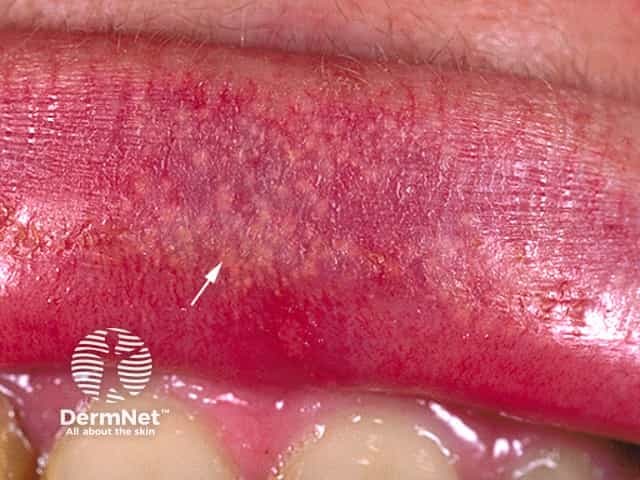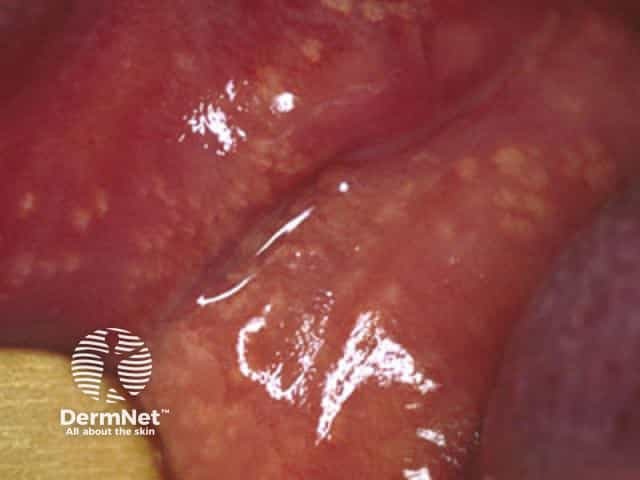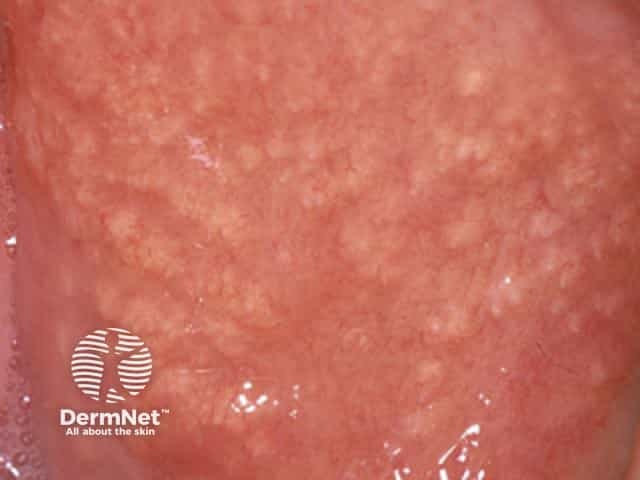Main menu
Common skin conditions

NEWS
Join DermNet PRO
Read more
Quick links
Author: Vanessa Ngan, Staff Writer. Updated by Dr Amanda Oakley, Chief Editor, and Clare Morrison, Copy Editor, April 2014. DermNet Revision July 2021
Introduction Demographics Clinical features Diagnosis Treatment
Fordyce spots are visible ectopic sebaceous (oil) glands without hair follicles located in the oral and/or genital mucosa. They are also called Fordyce granules.
Fordyce spots are present in 80% of adults. They are probably present at birth but become bigger and more visible from about puberty onwards.
Fordyce spots are not a sexually transmitted disease and they are not infectious. Although some case series have reported an association with Muir-Torre variant of Lynch syndrome, Fordyce spots are best regarded as a normal variant.
Fordyce spots are small (1–5mm), slightly elevated yellowish or white papules that can appear on the inside of the cheeks and vermilion border of the lips, glans or shaft of the penis (Tyson glands), or the vulva and vagina of the female. Ectopic sebaceous glands can also occur on the areolae of the breasts where they are called Montgomery glands.
They may occur as a solitary lesion or more frequently in crops of about 50–100. They are easier to see when the skin is stretched.

Fordyce spots

Fordyce spots

Fordyce spots
Fordyce spots are usually diagnosed clinically and a skin biopsy is rarely required. Histological examination shows a mature sebaceous gland immediately below the mucosal epithelium opening directly to the surface and lacking an associated hair follicle.
The importance of recognising these papules as Fordyce spots is in the differential diagnosis of other conditions that may appear similar. Some sexually transmitted infections (STIs) may start off looking like Fordyce spots on the genitals so it is essential to get a proper diagnosis from your doctor. STIs need to be treated appropriately with medication.
Fordyce spots are generally harmless and do not require any treatment. Avoid picking or squeezing the spots.
Fordyce spots can be a cause of cosmetic concern for some patients. Electrosurgery and vaporising laser treatment (CO2 laser) have been used successfully to remove the spots.